If you could only own one firearm, what would it be?
It’s a good question to ask because it really makes you think about which types of guns are more important or useful than others, and at the very least, it’s a fun question to ask as well.
Here’s the short answer: there’s no right answer to this question, and there’s no such thing as the ‘perfect gun that can do everything either.’
But there are certain types of guns that are more versatile than others and that might be a better choice for you, depending on your circumstances.
In this article, we’ll explore some of the best options for guns if you could have only one.
Here are some of the best candidates for the one firearm to have if you could own only one:
12 or 20 Gauge Shotgun
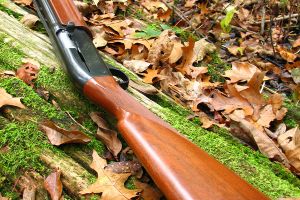 It’s hard to argue against a shotgun (particularly in the 12 or 20 gauge) as being the one gun to have if you could only have one.
It’s hard to argue against a shotgun (particularly in the 12 or 20 gauge) as being the one gun to have if you could only have one.
That’s because shotguns are incredibly versatile due to their ammunition. There are three main ammo types of shotguns: slugs, birdshot, and buckshot.
Slugs, which are a single projectile, are ideal for either home defense or for big game hunting within moderate ranges. Birdshot, which consist of multiple small pebbles, are ideal for bird hunting and small game hunting. Buckshot is made up of several larger projectiles and is devastatingly effective for close range home defense.
Related: How to Make Shotgun Shells at Home? (With Pictures)
Shotguns are not without their limitations. They cannot be easily concealed on your body like a handgun can, and they lack the longer range of a rifle, but there’s no question that they are very useful within their parameters.
Examples of good shotguns to consider include the Mossberg 500 or the Remington 870. Both are very reliable and have an abundance of spare parts and accessories floating around on the market.
.22 Rifle
Wait, a .22 rifle could be the one gun to have if you could only have one?
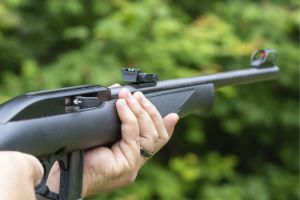
First, hear us out.
The truth is that the .22 rifle is one of the most underestimated types of firearms there is.
Since .22 ammunition is so small, you can stockpile it in bulk without taking up lots of space and also carry much of it on your person.
.22 ammo is perfect for small game hunting and pest control, and it’s a great round for target practice and training purposes. It’s also much quieter than larger calibers.
Obviously a .22 is not without its limitations either. .22s lack the stopping power of larger calibers, and they are not ideal for big game hunting either.
Examples of good .22 rifles to consider include the Marlin Model 60, the Ruger 10/22, and the Smith & Wesson M&P15 Sport II.
AR-15/AR-10
An AR-15 in 5.56x45mm NATO/.223 Remington (or its larger counterpart, the AR-10 in 7.62x51mm NATO/.308 Winchester) is arguably the most practical and versatile centerfire rifle on the market today.
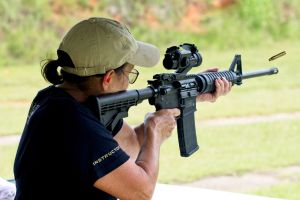
That’s because an AR is an excellent choice for hunting, home defense, and tactical use alike.
The 5.56 round is ideal for medium-sized game such as deer and wild hog, while the .308 round of the AR-10 can bring down larger game such as bear or deer, and can also reach targets at longer distances.
Related: The Complete Guide to Cleaning and Lubricating Your Ar-15
Another advantage to the AR-15 is that it is the best selling rifle in the United States, and as a result, there is a plentiful amount of spare parts and accessories floating around so you can easily customize your rifle to your liking.
The biggest downside to an AR is that it cannot be easily concealed and carried around on your person like a pistol can.
Speaking of pistols…
9mm Pistol
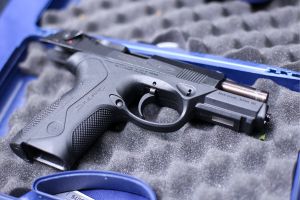 The biggest advantage to having a pistol as your one gun is how it can be easily concealed and carried around with you everywhere you go. It’s also very maneuverable in tight conditions. A simple reliable 9mm pistol with a lightweight polymer frame and a generous magazine capacity would be an ideal choice for a pistol if you could have only one.
The biggest advantage to having a pistol as your one gun is how it can be easily concealed and carried around with you everywhere you go. It’s also very maneuverable in tight conditions. A simple reliable 9mm pistol with a lightweight polymer frame and a generous magazine capacity would be an ideal choice for a pistol if you could have only one.
That’s because it would be a good pick for home defense and concealed carry, and you can take comfort in taking it with you wherever you go (where allowed, of course).
⇒ How to Avoid Being Targeted During Civil Unrest
The obvious drawback to a pistol is that it lacks the longer range and stopping power of a rifle, and it’s also not a great option for hunting.
Examples of good 9mm pistols to consider include the Beretta APX, Canik TP9, Glock 19, Heckler & Koch VP9, Smith & Wesson M&P, SIG Sauer P320, Springfield XD, or the Walther PDP.
.357 Magnum Revolver
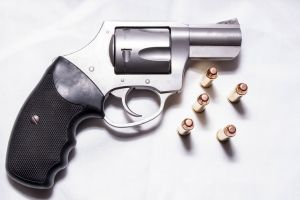
Even though they lack the larger capacities of a pistol, a revolver should not be underestimated.
Revolvers are still around today because of their inherent simplicity, and they can be a good pick for anyone who may struggle with the complexities of a semi-automatic pistol.
The .357 Magnum cartridge is arguably the most practical chambering for a revolver if you could have only one. That’s because the .357 offers a lot of stopping power for a self-defense situation, and it’s also a good caliber to bring down game such as deer or wild hog so long as you are within a moderate range.
Another advantage to the .357 is how it can also chamber and shoot the .38 Special cartridge, which has a lot less recoil and would be a better option for anybody who is more recoil sensitive.
Examples of good .357 Magnum revolvers on the market include the Ruger GP100 and the Smith & Wesson 686.
What If You Could Only Own One Firearm?
At the end of the day, the best firearm for you is a personal choice. It all depends on your unique needs and what fits best into your overall preparedness plan.
The types of firearms I’ve covered each have their strengths and weaknesses, but they’re chosen for their versatility and effectiveness in various situations. When it comes to defending yourself, your family, and your supplies, having the right firearm is crucial. Yet, relying solely on a good firearm isn’t enough; you need a comprehensive approach to security.
While securing your home is critical, true preparedness means being ready for any scenario that comes your way. If you’re serious about turning your home into a self-reliant stronghold, this guide provides in-depth strategies to make it happen.
It doesn’t just cover stockpiling food and securing your home—it also outlines exactly what to do when a crisis hits, giving you the upper hand and reducing the risk of your home becoming a target for looters, rioters, or intrusive authorities. Designed for those who aim to weather long-term emergencies without leaving their home, this guide is truly a game-changer.
You may also like:
 10 Items That Vanished When the Great Depression Hit
10 Items That Vanished When the Great Depression Hit
This “Quick Fix” Is More Effective in Keeping Out Intruders Than a Solid Steel Door (Video)
How Will You Treat Your Current Ailment When The Medical System Collapses?

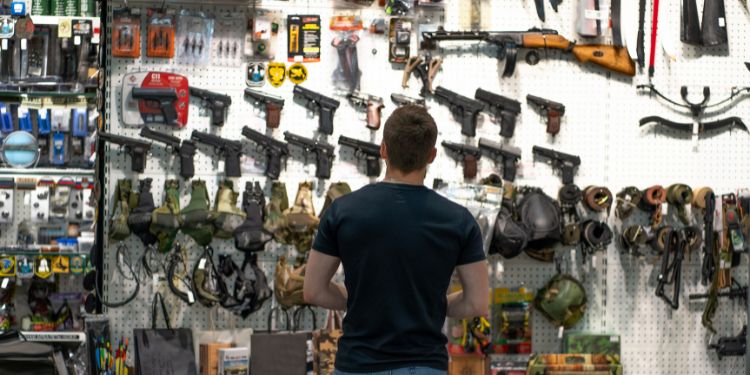













No 45acp?
trash caliber
There’s a reason why the 1911& 45acp have been around longer than you and will be around after you are long gone!
I got 3 out of 5. Considering I live in Brazil, where (legal) gun control is strict, I think I’m doing OK.
It depends on your location. Urban vs. Rural makes a big difference to me.
In the city, if you are restricted to only ONE firearm, the .22 pistol has some advantages. In an environment like that, hunting would be rather restricted in the city scape. Learning how to trap and other noiseless methods of catching live meat will become a valuable skill. Rimfire is not only compact but is very easy to find (though not as inexpensive as it used to be). If you had to leave everything you have except for what can be carried, the .22 long rifle is a good choice.
In the rurals, much different options. If big game is available (or private livestock of similar size) the rifle and shotgun come into play. I think bird hunting is not enough incentive to expend a single round – bird trapping is an option here. I would focus on buckshot and slug loads for self defense and hunting. 200 rounds of buckshot and 100 rounds of slugs should get it done if you are conservative with your shooting. Rifles – the advice in original article make sense. AR-15, at least a dozen spare magazines, red dot sight with folding iron sight backup is minimal. Do be aware that many will want to take possession of your AR-15 for their own use.
Also – pellet rifles make good small game foraging – vermin eradicators if that is one of your needs. The break barrels are very quiet and powerful, but are pretty expensive as well.
357 mag is a good platform because you can have to platforms. i have a revolver and a lever action rifle. 9mm is good and you can have a pistol and carbine. i have s&w hand gun and carbine that have interchangeable magazines.
Agreed. Pistol caliber carbines make good car/truck guns IMHO.
357 mag is a good platform because you can have to platforms. i have a revolver and a lever action rifle. 9mm is good and you can have a pistol and carbine. i have s&w hand gun and carbine that have interchangeable magazines.
357mag / 38spl lever action will adequately
Fill nearly any need